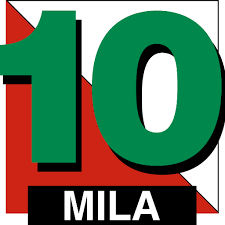 Ready for 10Mila again – the real start of the 2019-season for many! Spectators both at home and on the arena in Sweden can expect highly entertaining competitions – read on for all you need to know about the 2019-edition of 10Mila. This year 10Mila is organized in the southern part of Sweden – in the Glimåkra area.
Ready for 10Mila again – the real start of the 2019-season for many! Spectators both at home and on the arena in Sweden can expect highly entertaining competitions – read on for all you need to know about the 2019-edition of 10Mila. This year 10Mila is organized in the southern part of Sweden – in the Glimåkra area.
The start for the men’s relay is at 20:30 CET with the winners expected in the finish at 7:30 after around 108 kilometers of orienteering spent on 10 legs. The women start their 5 leg & 36 kilometer relay at 13:15 CET with estimated time for winners to finish at around 17:15 CET. Around 300-350 teams will start in each relay.
Live services
There are a number of Live services available to follow 10mila 2019. If you have 175 SEK to spend, a combination of webTV and live results is probably the best way to follow the event. The webTV is broadcasted in three channels – Swedish (Per Forsberg, Fredrik Löwegren), English (Boris Granovskiy, Cristina Luis) and Finnish (Antti Örn, Kalle Rantala). There are also free webTV studio broadcasts Friday evening (Swedish 18:00-19:00 and Finnish 19:00-19:30) and Saturday (09:45-10:15, 12:55-13:15 and 20:00-20:30, Swedish only), just like last year.
- Online results + live webTV will be offered
- Live GPS tracking will only be available via Web TV (and not in GPSSeuranta) during the event, operated by the author of this article – full tracking is made public after the event. Tracking is planned for all legs in both men’s and women’s relay.
Useful links:
- 10Mila webpage
- PM, invitation and other related information at the 10Mila Eventor-page
- Competition PM
- Startlist
- The 10Mila newspaper
Stony & rather flat
The terrain at this year’s 10Mila is stony and quite flat. Below is an old map of a small part of the race area. Not easy to see the contours behind all those boulders… See old maps from the competition area here.
Very long “långa natten” – but very short 9th leg!
The first part of the leg setup for 10mila is similar to last year with a long first leg (12 km) which is partly day/partly night, then a quite long second leg in the dark (11.6 km) followed by a short night leg (6.1 km – 2 km shorter than last year), and then “långa natten” is the 4th leg (17.8 km, unforked leg, 2.5 km longer than last year!). The 5th and 6th leg are longer night legs than last year (11.0 and 10.1 km long), and then it starts to get day with a short leg (8.6 km), a longer leg (12.0 km) and the very short 9th leg (5.2 km). The last leg is the seconds longest in the relay, a 14 km leg in daylight. Last year there were two unforked legs (4th and 7th), this year we are back to only one unforked leg.
The shorter legs is often were the relay is decided – especially the short night legs
Last year the winner team of IFK Göteborg (red line) was more than 10 minutes behind after the 3rd leg – but from there on they ran a very impressive relay; alone in the lead from the 6th changeover (see graphics below). As often the case, the shorter night legs after the long leg (5th and 6th leg) were very decisive, many teams losing the chance for a top result here. OK Linné (blue dashed) had a very good start of the race – and an equally impressive finish, but lost more than 15 minutes to IFK Göteborg on leg 5 and 6!
The most impressive performance of the night was Rassmus Andersson of Linné who built up a 10(!) minute lead during the 15 km long 4th leg (“långa natten”). Nearly equally impressive was IFK Göteborg’s Johan Högstrand on the same leg who was only 12 seconds slower, catching team by team, taking IFK from a 33th to a 13th place. Look at that gap and the large group behind at the illustration below!
Again a long unforked third leg for the women
In the women’s class there is one unforked leg – the 9.8 km long third leg. The relay opens with a 7.3 km first leg and continues with a 6.2 km leg. The last two legs are 4.1 km and 8.7 km long. All legs are run in daylight.
The fourth leg was very decisive though, splitting the big group into mostly single teams
Looking at the decisions in the women’s class last years, the long third leg has lead to the top teams gathering in a big group – with a new mass start on the shorter fourth leg. The fourth leg has been very decisive, though, splitting the big group into mostly single teams – a few groups of 2-3 teams. This is definitely were you should put in a stable runner in your team – if you can …. Last year’s winner Järla was nearly 7 minutes behind going into the long, unforked 3rd leg, but finished the leg all the way up in the lead. Järla’s Elin Skantze lost some time on the 4th leg, but Karolin Ohlsson ran a great last leg, taking Järla to a clear win ahead of IFK Göteborg and Halden SK.
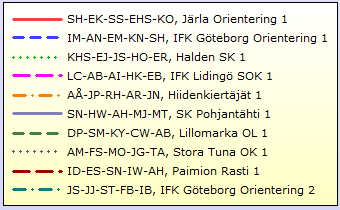
 World of O News
World of O News
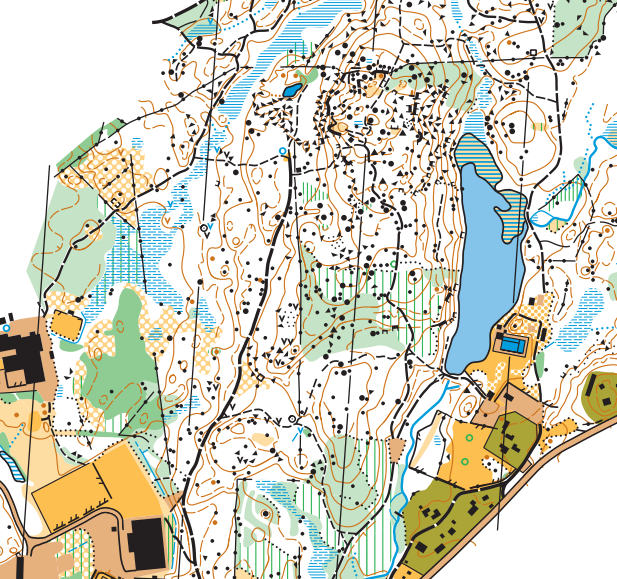
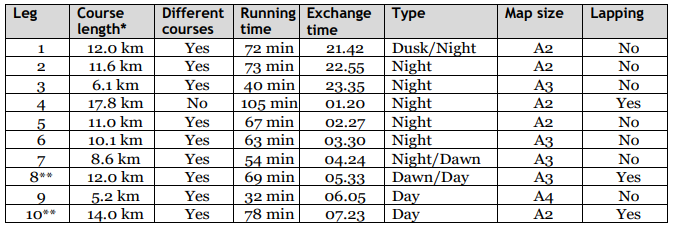
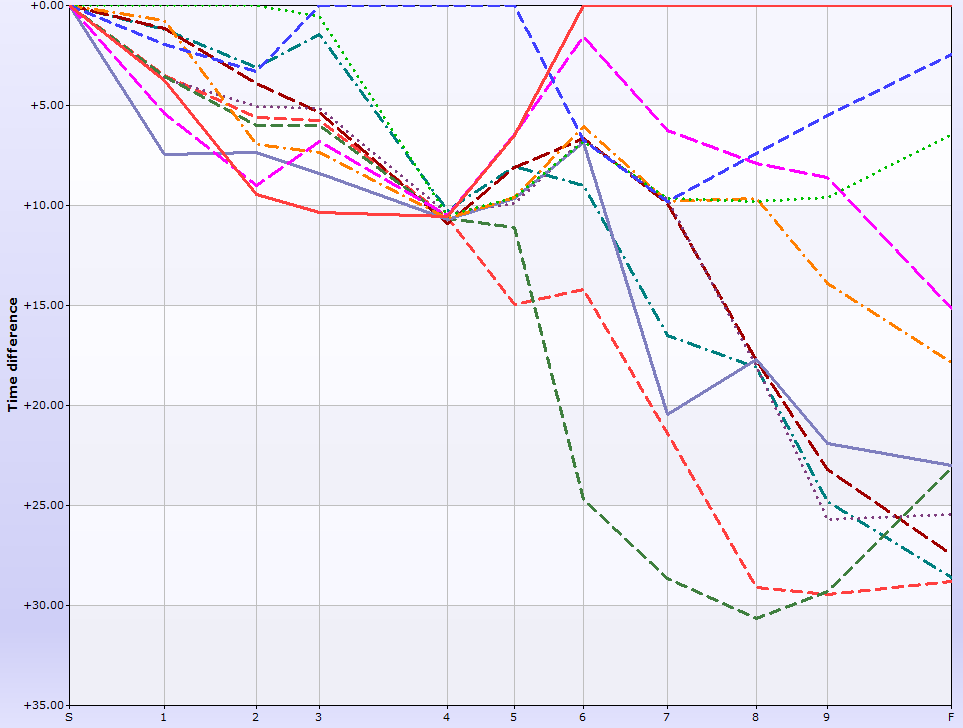
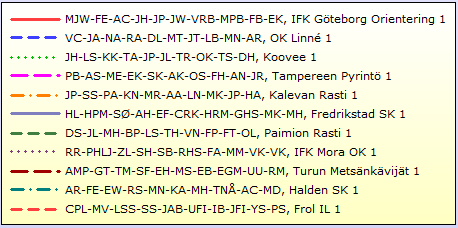
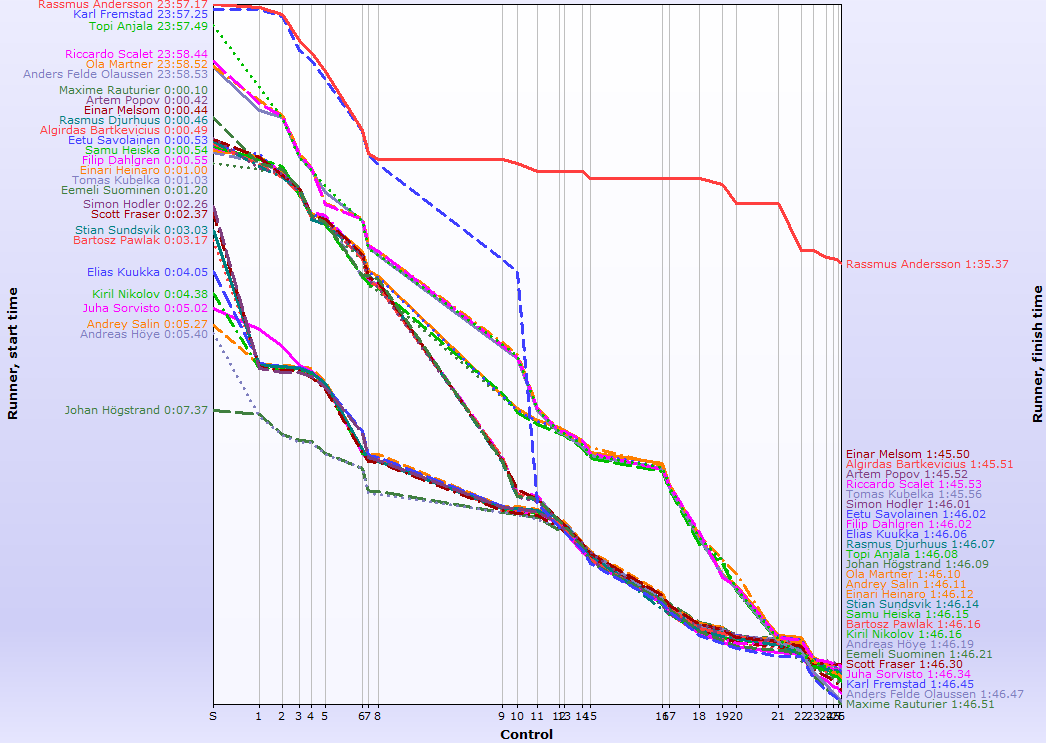

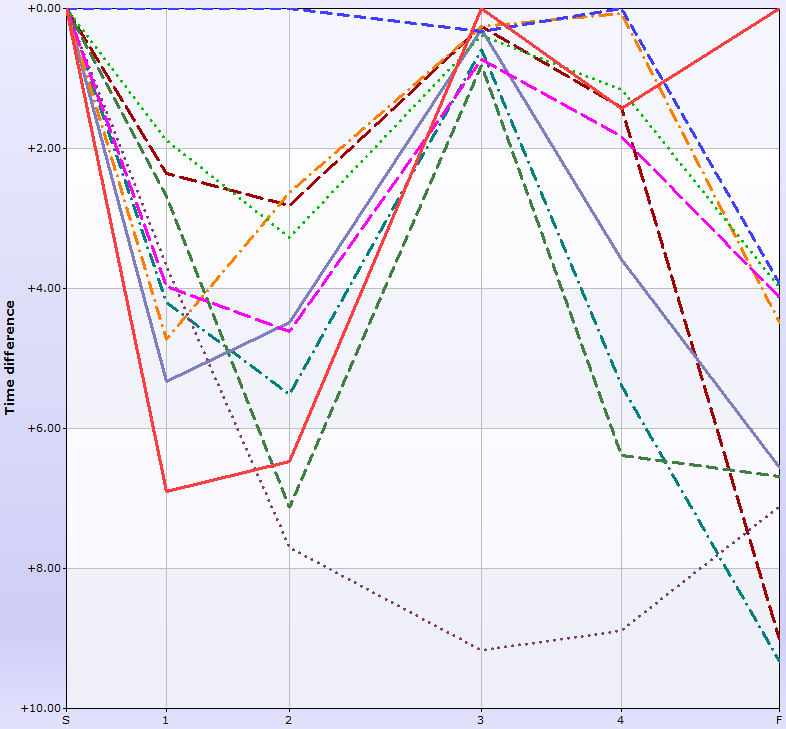



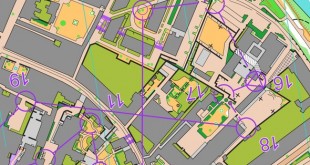
Thanks Jan – sadly I wasn’t well enough to watch live this year. Do you know when the full video will be available to watch?
@Adrian: You’ll be able to see the whole broadcast now via the webTV-link if you pay for the webTV. In some weeks it will also be uploaded to YouTube.